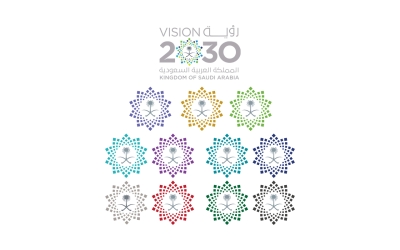

The Privatization Program, one of the Saudi Vision 2030 realization programs, was launched by the Council of Economic and Development Affairs in 2018. The program began by identifying government assets and services suitable for privatization in various sectors of the Kingdom of Saudi Arabia. It focuses on developing mechanisms for privatization, enhancing the role of the private sector in service provision, and making government assets available for private sector involvement. This aims to improve service quality, reduce costs, promote economic diversification, create more investment opportunities, and increase employment opportunities for citizens.
The program is keen to provide beneficiaries with the best services by ensuring the quality of service providers' outputs. The program also works on incentivizing and encouraging local and foreign capital to invest locally, in addition to enhancing competition and bolstering the role of the private sector.
Through the program, the Saudi government works on either allocating some government assets or outsourcing certain government services to the private sector. The program aims to enhance competitiveness, improve service quality, stimulate economic development, enhance the business environment, and address barriers that may hinder the private sector's ability to play a greater role in the Kingdom's development.
The Privatization Program aims to enhance the efficiency of the national economy, improve provided services, and make them accessible to the largest possible number of beneficiaries, in line with the goals of Saudi Vision 2030, including increasing the private sector's contribution to the gross domestic product from 40 percent to 65 percent by 2030.
Pillars of the Privatization Program
The program is based on three fundamental pillars in its operations. The first is the development of general legislative frameworks for privatization, enabling the processes of privatization and their governance. The second is contributing to the formation of entities capable of implementing privatization in a manner and mechanism that preserves the interests of the state and its citizens. The third is directing the program's key initiatives, comprising over one hundred privatization initiatives supported by the National Center for Privatization, within specified timeframes.
Achievements of the Privatization Program
The program has established the general framework for the privatization system, which includes issuing the Privatization Law and establishing the National Center for Privatization to regulate procedures, enhance private sector participation, and ensure the integrity of contract procedures to incentivize private sector investment in both short and long terms. Additionally, it has activated supervisory committees for various sectors.
The Privatization Program successfully completed the privatization process of the flour milling sector by offering full stakes to four milling companies to private sector investors. It also signed agreements for al-Jubayl-3 independent water production project and the Yanbu-4 independent water production project, with alliances from the private sector. Additionally, it finalized the contract and financial closure for the first batch of the initiative to attract private investments to finance the construction of educational buildings and launched the second competition.
Targets of the Privatization Program
By the end of 2025, the program aims to achieve a non-oil government revenue of SAR143 billion and total investment from public-private partnership operations to reach SAR62 billion. Additionally, it aims to enhance government spending efficiency through partnership operations, saving SAR14 billion.
Indicators of the Privatization Program
The program utilizes a variety of indicators to measure its performance and progress in achieving its goals. Among these indicators are: contribution to the gross domestic product, non-oil government revenues, non-governmental investment, contribution to local content, impact on inflation rate, total government revenues from asset sales, number of investments between the public and private sectors, government net savings, development of the organizational approach for opportunity scouting, and others.
Related quizzes

